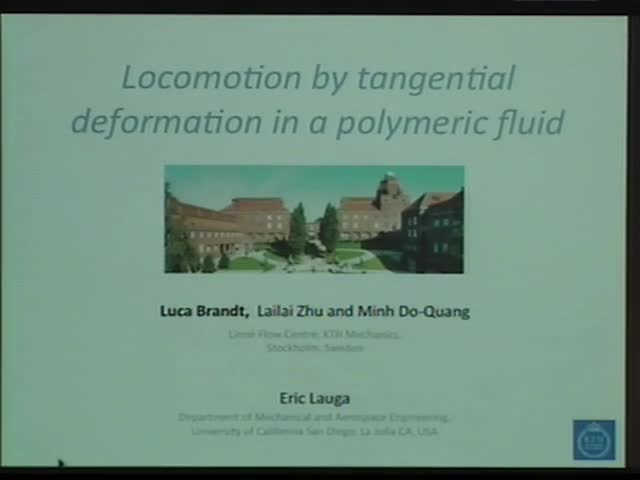Numerical simulations of a free squirmer in a viscoelastic fluid
Presenter
June 2, 2010
Abstract
The locomotion of biological microorganisms has been the object of much research over the last half of a century. Although significant progress has been made in the study of motion in Newtonian fluids, many biological cells such as bacteria often encounter viscous environments with suspended microstructures or macromolecules. The physics of micro-propulsion in such a non-Newtonian viscoelastic fluid has only recently started to be addressed. In our work, we present a numerical study of the motility of an axisymmetric spherical squirmer in a polymeric flow.
The microswimmer that we consider here is driven by a purely tangential distortion on the outer surface reproduced as non-homogenous boundary condition on a rigid sphere. We solve the hydrodynamic Stokes equation (zero Reynolds number) with the extra stress term generated by advection and stretching of polymers. As transport equation for the polymeric stress, we use here the nonlinear Giesekus model.
The swimming speed is lower in a visco-elastic fluid and is asymptotically recovering for large Weissenberg numbers approaching values only about 15% smaller than in a Newtonian fluid. Interestingly, the efficiency is seen to significantly increase as the viscosity of the polymeric fluid is increased.
